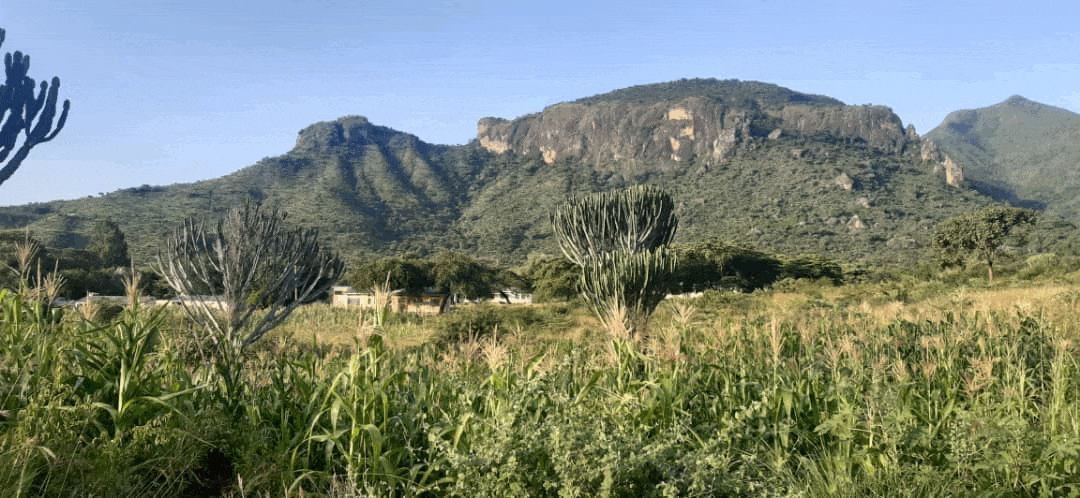Uganda's approach to ratifying the CBDR. How far has the country come?
 What is the Background, Legal Framework of the CBD?
What is the Background, Legal Framework of the CBD?
Biodiversity is defined as the variability among living organisms from all sources including, inter alia, terrestrial, marine & other aquatic ecosystems & the ecological complexes of which they are part; this includes diversity within species, between species and of ecosystems . In the simplest of terms biodiversity provides for the inclusivity & continued existence of all creatures on the planet within their respective ecologies. The Law on Biological Diversity in the international context remained a legal lacuna until under the auspices of the UNEP a panel of international experts on biodiversity was established which later graduated into an international negotiation committee that lead to the drafting of the Convention of Biodiversity which was ready for signature during the Rio Conference of 1992 . Uganda has been an active participant in International environmental law and in this brief we see how far Uganda has come in domesticating the CBD.
The Convention on Biodiversity
Prior to 1992, although there were treaties such as the CITES on wildlife conservation, there was no comprehensive legal framework on Biodiversity, the first step towards this was the establishment of the panel of experts in Biodiversity in 1988 as noted above, which later grew into the International negotiation committee that finally came up with the Convention of Biological Diversity (CBD) which was one of the three conventions adopted at the Earth Summit in Rio 1992. The convention came into force on the in December 1993 and has been ratified by 200 nations, Uganda being one of them . The objectives of this convention are the conservation of biodiversity, the sustainable use of its components & the fair and equitable utilization of the benefits arising out of the use of genetic resources . Parties are obligated to maintain an inventory & monitor biodiversity, incorporate the concepts of conservation and sustainable development into national strategies and economic development, and finally preserve indigenous conservation practices .
It has three protocols namely; the Catagena Protocol on Bio-safety (2000) on the transfer & use of living modified organisms (LMO's) which may have significant effect on biodiversity, The Nagoya- Kuala Lumpur supplementary protocol on Civil liability & redress arising from the Catagena protocol (2010), this provided a procedure for redress & liability arising from damage of biodiversity by LMO's and finally the Nagoya Protocol on Access to Genetic Resources and the Fair and Equitable Sharing of Benefits arising from their Utilization (2010), this provided an international framework for the fair & equitable sharing of benefits arising from the use of genetic resources.
Uganda's legal framework
Uganda is a landlocked country in East Africa, Uganda is enriched with biodiversity in both, marine, terrestrial & aerial ecosystems. Uganda has 10 national parks & 12 wildlife reserves and 506 forest reserves which act as harbors for most of these species. With a recorded 18,783 species of fauna and flora, Uganda ranks among the top ten most bio-diverse countries globally. It is host to 53.9% (400 individuals) of the world's remaining population of mountain gorillas, 11% (1057 species) of the world's recorded species of birds (50% of Africa's bird species richness), 7.8% (345 species) of the Global Mammal Diversity (39% of Africa's Mammal Richness), 19% (86 species) of Africa's amphibian species richness and 14% (142 species) of Africa's reptile species richness, 1,249 recorded species of butterflies and 600 species of fish. In addition, Uganda harbors seven of Africa's 18 plant kingdoms (more than any other African country) and its biological diversity is one of the highest on the continent . About 109 species from different taxonomy groups where considered to be critically endangered by the IUCN in 2016.
The major issue has been degradation of the ecosystems by humans & exploitation of some of the species through illegal activities like poaching & illicit trade of wildlife. The key endangered species include the mountain gorilla, rhino, leopards, red colobus monkeys, lions etc.
The Ugandan Constitution envisions the protection of biodiversity and ecosystems. This could be attributed to the fact that the Ugandan constitution was promulgated in 1995 after the Rio summit which gave an insight to the need to conserve natural ecosystems. The Uganda constitution under Art 237 imposes a duty on the Government to protect all rivers, lakes, forest reserves, national parks and other natural resources to be conserved for ecological or other touristic purposes for the benefit of all citizens . This provides a platform for the protection of spaces in which most of the endangered species & other species harbor. The constitution also provides for the right to a clean & healthy environment which could be expounded to mean conservation of ecosystems that facilitate the attainment of a clean and healthy environment. The Constitution also entrusts the Parliament with the duty to make laws governing the protection and preservation of the environment.
Uganda adopted the Convention on biodiversity on the 29th December 1993 and is also party to all the subsequent protocols related to it. Uganda is a dualist state & has to domestic a treaty through an act of Parliament before it has legal effect . The country has taken steps to implement its vertical obligations under the treaty through various Acts of to pass laws on the protection of the environment. These include the Uganda Wildlife Act, 2019, The National Environment Act, 2019, it's important to note that there is no specific Ugandan law that governs biodiversity but it's governed through different laws.
National Environment Act, 2019, now amended which deals with the management & conservation of the environment, it requires all projects with the likelihood to affect the environment to be subjected to an environmental impact assessment, and the Act also establishes the National Environmental Management Authority which has the duty to enforce the provisions of the Act which goes back to protection of habitats of different species.
The Uganda Wildlife Act, 2019, which has the general objective of governing the Conservation & sustainable management of wildlife. It continues the existence of the Uganda Wildlife authority & the wildlife fund. To this end, the Act contains sections addressing wildlife conservation areas; protected species; wildlife use rights; hunting and trapping; management of problem animals; and international trade in species and specimens . Cumulatively these acts of parliament domesticate the provisions of the CBD by protecting spaces/ ecologies in which the species, and prohibiting the exploitation or hunting of these species. It also criminalizes activities that maybe otherwise deleterious to the wildlife.
The National Forestry & Tree planting Act, 2003, this Act was passed with the sole objective to conserve the forests within the country, it classifies the forests & states that the Government of Uganda shall conserve all forests reserves for the ecological, forestry & tourism purposes for the good of all citizens in Uganda. It establishes the National Forestry Authority & reserves certain species of trees that may be considered as "endangered, rare or threatened species" It criminalizes activities that would be deleterious to the forests. On top of these acts of parliament the country has also come up with the Uganda wildlife policy to ease implementation of the laws in terms of wildlife conservation. Finally the Country also produced a National Biodiversity strategic plan (NABSAP) in 2016, to help in implementation of its obligations under the treaty, this is the only national document drafted directly in relation to the treaty. This strategy analyses the major threats to biodiversity & outlines a plan also including new emerging solutions to conserve biodiversity.
The Ugandan Courts have also not been silent in upholding the principles of environmental law.
Godfrey Nyakana vs Attorney general Constitutional Appeal no.5 of 2011 court defined sustainable development as development that meets the needs of the present without compromising the ability of the future generations to meet their own needs. Court cited
VELLORE CITIZEN'S WELFARE FORUM --Vs-- UNION OF INDIA & OTHERS (1996) 5 SCC 647, where the supreme court of India stated; wherein the Court defined & upheld the principles of sustainable development, precautionary principle & stated that Governments should take all necessary measures to avoid environmental degradation. This case is on the generic principles of environmental law but there is still need for the Courts, preferably the Supreme Court to be tested on specifically Biodiversity law.
Uganda's approach to implementation of the CBD, in conclusion
As can be observed in the above section Uganda's approach to conserving biodiversity is a cocktail of all three approaches. Regulation of resource exploitation, regulation of spaces & regulation of trade in such species. The laws for example the Uganda Wildlife Act protect resource exploitation basically through regulation of poaching & illegal hunting of species etc. The National Environment Act & National forestry & tree planting Act regulate the protection of the habitats of the species. However, the silver bullet to protecting biodiversity would be the implementation of these well crafted laws.
References
Article 2, Convention on Biological Diversity, 1992
Dupey & vinuales, International Environmental Law, second edition, 2018
Dupey & vinuales, supra
https://jncc.gov.uk/our-work/convention-on-biological-diversity
Article 1, Convention on Bio Diversity, 1992.
https://enb.iisd.org/negotiations/convention-biological-diversity-cbd
Ibid
https://ugandawildlife.org/
https://www.nfa.go.ug/index.php/component/fsf/?view=faq&catid=2
https://www.cbd.int/countries/profile/?country=ug
Art 237(2)b, The Constitution of Uganda, 1995
Art 39, The Constitution of Uganda, 1995
Art 245, The Constitution of Uganda, 1995
Jamil Ddamulira Mujuuzi, International human rights law and foreign case law in interpreting Constitutional rights: The Supreme Court of Uganda and the death penalty question, African Human Rights Law Journal (2009) Vol 9 No.2
https://www.informea.org/en/legislation/uganda-wildlife-act-2019
Uploaded on: 2024-04-15 03:53:52



 Terra Legal Research Center is an environmental non-profit organisation in Uganda.
Terra Legal Research Center is an environmental non-profit organisation in Uganda.





